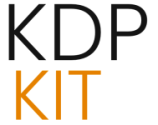The Ultimate Guide to Amazon KDP Keywords for 2025
In the competitive landscape of Amazon Kindle Direct Publishing (KDP), mastering keyword research is paramount for authors aiming to increase their book’s visibility and drive sales. As of August 2025, the strategies for keyword optimization continue to evolve, influenced by Amazon’s A10 algorithm and changing reader behaviors. This comprehensive guide delves into the intricacies of Amazon KDP keywords, providing actionable insights and best practices for authors in 2025.
Understanding the Power of Keywords on Amazon KDP
Keywords are the bridge between a reader searching for a book and an author’s work being discovered. Amazon’s search algorithm, A10, relies heavily on keywords embedded within a book’s metadata—title, subtitle, description, and backend keywords—to determine relevance and ranking. Effectively chosen keywords signal to Amazon that a book aligns with a customer’s search intent, thereby improving its placement in search results. This improved visibility directly translates to a higher likelihood of clicks, conversions, and ultimately, sales. As of 2025, the emphasis remains on relevance, search volume, and competition level when selecting keywords.
Key Trends in Amazon KDP Keywords for 2025
The keyword landscape on Amazon is dynamic, with trends shifting based on genre popularity, reader preferences, and emerging topics. For 2025, several key trends are shaping keyword strategy:
Genre-Specific Keywords
Certain genres consistently drive high search volume and sales. Understanding the trending keywords within these genres is crucial:
- Fiction: Popular fiction genres like Dark Romance, Cozy Mystery, Science Fiction, and Fantasy continue to be strong performers. Keywords such as “Shifter romance,” “Fae novels,” “Supernatural thriller,” “space opera,” and “gamelit” are seeing increased usage and effectiveness.
- Nonfiction: In nonfiction, Personal Development, Health & Wellness, and Business & Entrepreneurship remain evergreen. Keywords like “Crypto for beginners,” “Keto diet recipes,” and “Mindfulness for anxiety” are highly sought after.
Long-Tail Keywords
Long-tail keywords, which are more specific, multi-word phrases, are increasingly vital. While they may have lower search volumes individually, they often indicate higher purchase intent and face less competition. Examples include “gripping psychological thriller unreliable narrator” instead of just “thriller,” or “organic cotton baby clothes” for a more targeted audience. By using these detailed phrases, authors can attract a more qualified audience more likely to convert.
Emerging Sub-Niches and Tropes
The market is constantly evolving with new sub-niches and popular tropes. Authors who can identify and target these emerging areas with specific keywords can gain a competitive edge. For instance, within romance, “curvy girls” or “Bratva mafia” are gaining traction. In nonfiction, “ADHD parenting” or “trauma recovery” are examples of specialized topics with growing interest.
Strategies for Effective Amazon KDP Keyword Research
Successful keyword research involves a systematic approach to identify terms that resonate with readers and align with Amazon’s search algorithm. Here are key strategies for 2025:
1. Understand Your Audience and Search Intent
Before diving into tools, put yourself in the reader’s shoes. Consider what terms they would use to find a book like yours. Focus on keywords that describe the book’s use, features, or plot themes. For example, a shopper might search for “waterproof pop-up gazebo” rather than just “gazebo.” This understanding of search intent is critical for selecting relevant keywords.
2. Leverage Amazon’s Search Bar Suggestions
Amazon’s autocomplete feature is a powerful, free tool for discovering what readers are actively searching for. As you type a keyword into the search bar, Amazon suggests related terms based on real user data. These suggestions are invaluable for identifying popular and relevant phrases. Some authors recommend using an incognito window to get unbiased suggestions.
3. Analyze Competitor Keywords
Understanding what keywords your competitors are using can provide significant insights. Tools like Publisher Rocket offer a “Reverse ASIN” feature that allows you to input a competitor’s book ASIN and see the keywords it ranks for. By analyzing competitor metadata—titles, subtitles, and descriptions—you can infer their keyword strategies, even if backend keywords are hidden. This analysis helps identify market gaps and opportunities to outrank competitors.
4. Utilize Keyword Research Tools
While manual research is valuable, specialized tools can streamline the process and provide deeper insights. Several tools are recommended for 2025:
- Publisher Rocket (formerly KDP Rocket): Highly regarded for its comprehensive keyword research capabilities, including search volume, competition analysis, and category insights.
- Helium 10: Offers a suite of tools, including Magnet and Frankenstein, for generating and refining keyword lists, analyzing search volume, and tracking keyword performance.
- SellerApp: Provides access to a vast database of Amazon keywords and offers features for analyzing competitor keywords and identifying high-potential terms.
- Jungle Scout: Known for its Keyword Scout, which helps discover high-converting keywords and competitor strategies.
- AMZScout: Offers seed keyword research and reverse ASIN lookup capabilities across multiple Amazon marketplaces.
- Book Bolt: Useful for niche and keyword research, it also provides access to book interiors and design templates.
- SellerSprite: A free tool that aids in uncovering profitable keywords and validating niches, particularly for low- and medium-content books.
- ASINSeed: Another free tool recommended for uncovering profitable keywords and performing reverse ASIN lookups.
- Self-Publishing Titans: Offers a free Chrome extension for KDP keyword research, expanding search results and providing keyword metrics.
Many of these tools offer free trials or free versions, allowing authors to experiment and find what works best for them.
5. Categorize Keywords by Intent and Value
Prioritize keywords based on search volume, competition level, and relevance. Aim for terms that have significant search volume but moderate or low competition. Avoid irrelevant terms, as Amazon’s A10 algorithm can penalize listings for keyword stuffing or misrepresentation.
6. Focus on “Hot Keywords” and Trending Topics
Tools like Keyword Tool Dominator highlight “Hot Keywords” that are currently trending, allowing authors to capitalize on emerging buying trends. Staying abreast of these trends can significantly boost visibility.
Implementing Keywords in Your Amazon KDP Listing
Once you’ve identified your target keywords, strategic placement is key to maximizing their impact:
Title and Subtitle
The book title and subtitle are the most critical areas for keyword placement, as they carry the strongest SEO weight. Aim to include your primary, most relevant keywords here, ensuring the title remains clear, catchy, and accurately reflects the book’s content.
Backend Keywords
Amazon KDP provides seven backend keyword fields. These are not visible to customers but are crucial for improving discoverability. Use these fields to include additional relevant keywords, synonyms, or phrases that might not fit naturally into the title or description. Avoid repeating words already present in your title or subtitle, as this does not improve ranking and may even be flagged by Amazon.
Description and A+ Content
Integrate keywords naturally within your book’s description. Focus on creating an engaging narrative that highlights the book’s unique selling points while maintaining readability. For books eligible for A+ Content, further opportunities exist to incorporate keywords strategically.
Categories
Selecting the most relevant and specific categories for your book is as important as keyword selection. Amazon uses keywords to determine category placement, so aligning your keywords with your chosen categories can enhance discoverability.
Keyword Match Types and Their Importance
While primarily associated with Amazon Ads, understanding keyword match types is also beneficial for organic ranking:
- Exact Match: The most restrictive, requiring the search query to match the keyword exactly in sequence and without additional words. This targets highly specific buyer intent.
- Phrase Match: The search query must include all words in the keyword phrase, in the same sequence, but can include additional words before or after.
- Broad Match: The broadest match type, allowing Amazon to show ads for searches that are related to the keyword, including synonyms, misspellings, and related concepts. This can help discover new keyword opportunities.
Amazon’s algorithm often gives more weight to exact and phrase match keywords, suggesting that using keywords in their natural, customer-searched order is beneficial.
Common Keyword Mistakes to Avoid
Authors often make mistakes that hinder their book’s discoverability. Be mindful of these pitfalls:
- Using only single-word keywords.
- Ignoring regional language differences.
- Keyword stuffing (overusing keywords unnaturally).
- Using irrelevant genre keywords.
- Neglecting to update keywords regularly.
- Including information already present in other metadata fields (title, contributors).
- Using subjective claims about quality (e.g., “best novel ever”).
- Employing time-sensitive statements (e.g., “new,” “on sale”).
- Using misrepresentative information, such as author names not associated with the book.
- Using unauthorized brand names.
- Spelling errors.
The Future of Amazon KDP Keywords
As AI continues to influence content creation and marketing, the importance of strategic keyword research for human authors remains strong. While AI can assist in generating ideas and content, the nuanced understanding of reader intent and market trends that drives effective keyword selection is still best achieved through dedicated research. Authors who adapt to these evolving trends and consistently refine their keyword strategies will be best positioned for success on Amazon KDP in 2025 and beyond.







